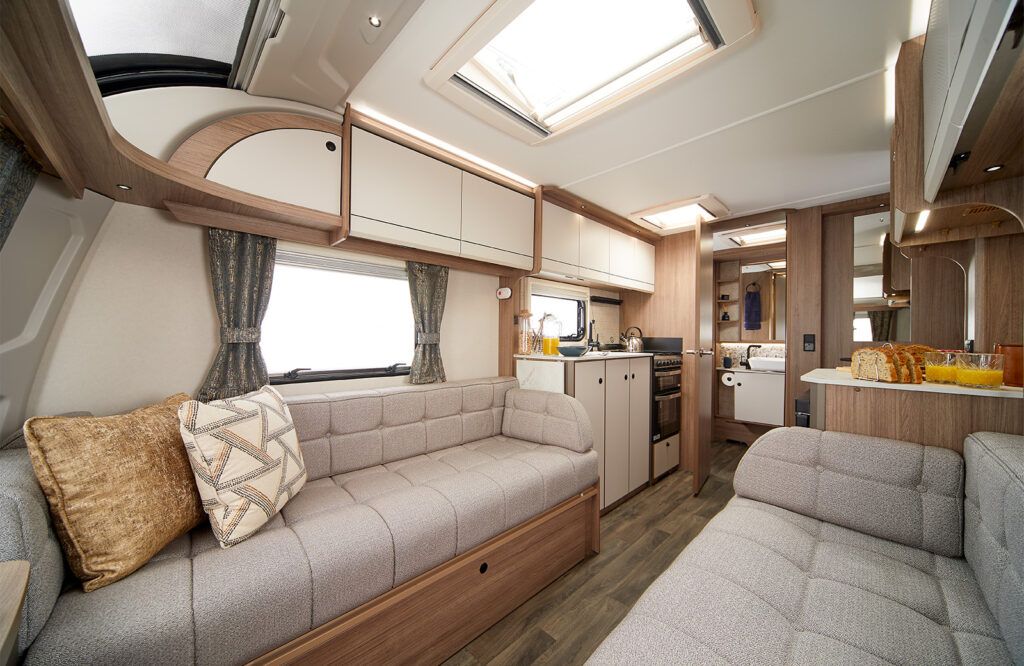
Embarking on a caravan journey offers a perfect blend of adventure, freedom, and comfort. However, choosing the right caravan is crucial to ensuring a smooth and enjoyable experience. With so many options available, it’s essential to consider your lifestyle, needs, and preferences. Here’s a comprehensive guide to help you select the ideal caravan for your travels.
1. Define Your Travel Goals
Before diving into caravan shopping, think about your travel aspirations.
- Frequency of Use: Are you planning occasional weekend getaways, or will you be hitting the road for months at a time?
- Destinations: Will you stick to well-paved caravan parks or venture off-road into rugged terrains?
- Climate: Consider weather conditions in your preferred destinations—insulation and air conditioning might be essential for extreme temperatures.
2. Consider the Size and Layout
The size of your caravan greatly impacts your comfort and manoeuvrability.
- Number of Travellers: If you’re traveling solo or as a couple, a compact caravan might suffice. For families, a larger model with bunk beds and extra storage is better.
- Living Space: Ensure the layout includes comfortable sleeping arrangements, kitchen facilities, a dining area, and, if necessary, a bathroom.
- Ease of Towing: Larger caravans offer more space but can be harder to tow and park. Match the caravan size to your towing vehicle’s capabilities.
3. Understand Caravan Types
Caravans come in various shapes and styles, each suited to different needs:
- Single Axle: Lightweight and compact, this type of caravan uses one axle with two wheels for support. It is easier to tow, manoeuvre, and park compared to larger twin-axle caravans, making it a popular choice for first-time caravan users or those with smaller towing vehicles. Despite its smaller size, a single-axle caravan often includes essential amenities such as a sleeping area, kitchenette, and dining space, catering to couples or small families. Its simplicity and affordability make it ideal for short trips and casual travel.
- Twin Axle Caravan: Equipped with two axles and four wheels, positioned in pairs under the chassis. This design provides several advantages in terms of stability, load distribution, and towing dynamics, but they are more difficult to manoeuvre when you’re pitching on site or returning them to storage.
- Pop-Top Caravan: Features a roof that can be raised or lowered, providing extra headroom when parked and a compact profile for towing. The lower height when the roof is down improves fuel efficiency and makes it easier to store or navigate under low-clearance obstacles. Pop-top caravans typically include essential amenities such as sleeping areas, a kitchenette, and dining space, making them a great choice for travellers seeking a balance of comfort and portability. Their lightweight design and compact towing size make them popular among adventurers and families alike.
- Lightweight Caravan: compact, easy-to-tow, lightweight caravans are designed to minimise weight without compromising on essential amenities. Ideal for smaller tow vehicles, it offers features such as sleeping areas, a kitchenette, and basic storage while maintaining a streamlined and fuel-efficient design. Lightweight caravans are perfect for solo travellers, couples, or small families looking for a more manageable and cost-effective option. Their reduced weight also makes them easier to handle, park, and store, appealing to both novice and experienced caravanners.
4. Evaluate Features and Amenities
Modern caravans come with a plethora of features—prioritise based on your lifestyle:
- Kitchen: Check for a stove, microwave, fridge, and adequate counter space.
- Bathroom: Decide if you need a full bathroom with a toilet and shower or if campsite facilities suffice.
- Storage: Ensure there’s enough room for your gear, clothing, and essentials.
- Comfort: Look for quality mattresses, air conditioning, and entertainment options.
5. Factor in Budget
Your budget will significantly narrow down your options.
- Initial Cost: New caravans offer the latest features but come at a premium. Used caravans can be more affordable, but inspect them thoroughly for wear and tear.
- Ongoing Expenses: Consider insurance, maintenance, storage, and fuel costs.
- Resale Value: Opt for reputable brands known for retaining value over time.
6. Check Towing Requirements
Ensure your vehicle is equipped to tow your chosen caravan:
- Towing Capacity: Check your vehicle’s towing limit and match it with the caravan’s weight (fully loaded).
- Hitching System: Verify compatibility with your vehicle’s tow bar and brakes.
- Driver Confidence: Test drive the caravan to ensure you’re comfortable with its handling and manoeuvrability.
7. Inspect Before You Buy
Whether buying new or used, conduct a thorough inspection:
- Structural Integrity: Look for signs of rust, dampness, or damage.
- Appliances: Test all electrical and gas-powered systems.
- Paperwork: Ensure all registration, warranty, and service documents are in order.
8. Think About Future Upgrades
As you gain experience, your travel preferences may evolve. Choose a caravan that allows for upgrades like solar panels, awnings, or better storage solutions to adapt to your changing needs.
9. Seek Expert Advice
Visit caravan dealerships and speak with experienced professionals. Attend caravan shows to explore different models and compare features side-by-side.
Conclusion
Choosing the right caravan is a personal journey influenced by your travel style, budget, and future aspirations. Take the time to research, explore, and test options to find the perfect match. With the right caravan, every trip will be a comfortable and memorable adventure! Safe travels and happy caravanning!
